Alitame
Synonym(s):L -α-Aspartyl-N-(2,2,4,4-tetramethyl-3-thietanyl)-D -alaninamide hemi(pentahydrate)
- CAS NO.:80863-62-3
- Empirical Formula: C14H25N3O4S
- Molecular Weight: 331.43
- MDL number: MFCD00868124
- EINECS: 1312995-182-4
- SAFETY DATA SHEET (SDS)
- Update Date: 2024-11-27 17:31:30

What is Alitame?
Chemical properties
White Solid
Chemical properties
Alitame is a white nonhygroscopic crystalline powder; odorless or having a slight characteristic odor.
Physical properties
Alitame [L-a-aspartyl-N-(2,2,4,4-tetramethyl-3-thietanyl)-D-alaninamide] is a sweetener based on an amino acid. It is a very intense sweetener, possessing a sweetening power of about 2000 times that of sucrose. It also exhibits a clean sweet taste similar to sucrose. Although it is metabolized, so little is needed that its caloric contribution is insignificant. Alitame is prepared from the amino acids, L-aspartic acid, D-alamine, and a novel amine.
Characteristics
Alitame is an amino acidbased sweetener developed by Pfizer Central Research from l-aspartic acid, d-alanine, and 2,2,4,4-tetraethylthioethanyl amine. A terminal amide group instead of the methyl ester constituent of ASP was used to improve the hydrolytic stability. The incorporation of d-alanine as a second amino acid in place of l-phenylalanine has resulted in optimum sweetness. The increased steric and lipophilic bulk on a small ring with a sulfur derivative has provided a very sweet product and good taste qualities.
Alitame offers several benefits such as stability at high temperatures and a broader pH range. For instance, it is stable for over a year at pH 6–8 and room temperature and withstands pasteurization. However, prolonged storage of acidic solutions at high temperatures or in combination with certain ingredients (hydrogen peroxide or sodium bisulfite) may produce off-flavors. In the presence of high levels of reducing sugars, alitame can undergo Maillard reactions.
History
Alitame, L-α-aspartyl-D-alanine N-(2,2,4,4-tetra methylthietan-3-yl)amide (5), was developed by Pfizer, but is owned by Danisco now. In 1986, Pfizer filed a food additive petition with the FDA. As of 2006, it was still pending. Alitame was approved for use as a sweetener by Australia in 1993, by China, Mexico, and New Zealand in 1994, by Indonesia in 1995, and by Colombia in 1996.
The Uses of Alitame
Alitame is a dipeptide amide derivative of aspartic acid used as an artificial sweetener. Alitame is about ten times sweeter than Aspartame (A790015) with a half life about twice as long.
The Uses of Alitame
Non-nutritive sweetener.
The Uses of Alitame
Alitame [L-a-aspartyl-N-(2,2,4,4-tetramethyl-3-thietanyl)-D-alaninamide] is a sweetener based on an amino acid. It is a very intense sweetener, possessing a sweetening power of about 2000 times that of sucrose. It also exhibits a clean sweet taste similar to sucrose. Although it is metabolized, so little is needed that its caloric contribution is insignificant. Alitame is prepared from the amino acids, L-aspartic acid, D-alamine, and a novel amine.
What are the applications of Application
Alitame is A dipeptide amide derivative of aspartic acid
Production Methods
Alitame may be synthesized by a number of routes.For example,
3-(D-alaninamido)-2,2,4,4-tetramethylthietane is dissolved in water
and L-aspartic acid N-thiocarboxyanhydride is then added in
portions with vigorous stirring, maintaining the pH of 8.5–9.5.
The pH is then adjusted to 5.5 and p-toluenesulfonic acid
monohydrate is added over a period of one hour. The precipitated
crystalline p-toluenesulfonate salt is collected by filtration. To
obtain alitame from its salt, a mixture of Amberlite LA-1 (liquid
anion exchange resin), dichloromethane, deionized water, and the
salt is stirred for one hour, resulting in two clear layers. The aqueous
layer is treated with carbon, clarified by filtration, and cooled to
crystallize alitame.
Alternatively, tetramethylthietane amine is condensed with anNprotected
form of D-alanine to give alanyl amide. This is then
coupled to a protected analogue of L-aspartic acid to give a crude
form of alitame. The crude product is then purified.
Definition
ChEBI: Alitame is a dipeptide.
Pharmaceutical Applications
Alitame is an intense sweetening agent developed in the early 1980s
and is approximately 2000 times sweeter than sucrose. It has an
insignificant energy contribution of 6 kJ (1.4 kcal) per gram of
alitame.
Alitame is currently primarily used in a wide range of foods and
beverages at a maximum level of 40–300 mg/kg.
Safety Profile
The Joint Expert Committee on Food Additives (JECFA) concluded that alitame was not carcinogenic and did not show reproductive toxicity. In 1996, an ADI of 0–1 mg/kg of body weight was allocated. It is approved for use in Australia, New Zealand, Mexico, and China. A food additive petition was submitted to the FDA in 1986, and approval is awaited. In the petition, the estimated daily intake is 0.34 mg/kg of body weight, which represents the amount if alitame is the only sweetener in the diet. The level at which no observed adverse effects occur in animals is 100 mg/ kg. Potential uses include baked goods, baking mixes, hot and cold beverages, dry beverage mixes, tabletop sweeteners, chewing gum, candies, frozen desserts, and pharmaceuticals. Alitame has been approved for use in some countries such as Australia, Mexico, New Zealand, and China, but not in the United States or the EU.
Safety
Alitame is a relatively new intense sweetening agent used primarily
in foods and confectionary. It is generally regarded as a relatively
nontoxic and nonirritant material.
Chronic animal studies in mice, rats, and dogs carried out for a
minimum of 18 months at concentrations >100 mg/kg per day
exhibited no toxic or carcinogenic effects. In people, no evidence of
untoward effects were observed following ingestion of 15 mg/kg per
day for two weeks.
Following oral administration 7–22% of alitame is unabsorbed
and excreted in the feces. The remaining amount is hydrolyzed to
aspartic acid and alanine amide. The aspartic acid is metabolized
normally and the alanine amide excreted in the urine as a sulfoxide
isomer, as the sulfone, or conjugated with glucuronic acid.
The WHO has set an acceptable daily intake of alitame at up to
0.1 mg/kg body-weight.
LD50 (mouse, oral): >5 g/kg
LD50 (rabbit, skin): >2 g/kg
LD50 (rat, oral): >5 g/kg
Metabolism
Alitame is noncariogenic. From an oral intake, 7%–22% is unabsorbed and excreted in the feces. The remainder is hydrolyzed to aspartic acid and alanine amide. The aspartic acid is normally metabolized, and the alanine amide is excreted in the urine as a sulfoxide isomer, sulfone, or conjugated with glucuronic acid. The incomplete absorption and metabolism result in a core value of 1.4 kcal g?1.
storage
Alitame is stable in dry, room temperature conditions but undergoes
degradation at elevated temperatures or when in solution at low
pH. Alitame can degrade in a one-stage process to aspartic acid and
alanine amide (under harsh conditions) or in a slow two-stage
process by first degrading to its β-aspartic isomer and then to
aspartic acid and alanine amide. At pH 5–8, alitame solutions at
238℃ have a half-life of approximately 4 years. At pH 2 and 238℃
the half-life is 1 year.
Alitame should be stored in a well-closed container in a cool, dry
place.
Incompatibilities
Alitame may be incompatible with oxidizing and reducing substances or strong acids and bases.
Regulatory Status
Alitame is approved for use in food applications in a number of countries worldwide including Australia, Chile, China, Mexico, and New Zealand.
Properties of Alitame
| Melting point: | 136-147° |
| Boiling point: | 608.5±55.0 °C(Predicted) |
| alpha | D25 +40 to +50° (c = 1 in water) |
| Density | 1.25±0.1 g/cm3(Predicted) |
| solubility | Methanol (Slightly) |
| form | Solid |
| pka | 3.71±0.10(Predicted) |
| color | White to Off-White |
| Odor | odorless |
| CAS DataBase Reference | 80863-62-3 |
Safety information for Alitame
| Signal word | Warning |
| Pictogram(s) |
 Exclamation Mark Irritant GHS07 |
| GHS Hazard Statements |
H302:Acute toxicity,oral |
Computed Descriptors for Alitame
New Products
3-Iodophenylacetic acid 3-Pyridineacetonitrile, α-hydroxy- 2-Propanamine, 1-chloro-, hydrochloride (9CI) 3-(hexyloxy)-4-(pyridin-3-yl)-1,2,5-thiadiazole 2-Hexyn-1-ol Dibenzo-18-crown-6 Nickel(II) perchlorate hexahydrate, 98% 4-Bromophenylacetonitrile, 95% 3-Bromo-4-fluoroaniline, 97% Sodium tetraborate decahydrate, 98% Palladium(II) acetate, trimer, Pd 99% 4-Bromo-2-chlorotoluene, 97% N N Dimethylformamide Dimethyl Acetal (Dmf Dma) 2,3-Dichloro Benzoyl Cyanide [Side Chain] Bis(2-Chloroethyl) Amine Hydrochloride L-Glutamic Acid Diethyl Ester Hydrochloride 5-(Difluoromethoxy)-2-Mercaptobenzimidazole 1-Ethyl-3-(3-Dimethylaminopropyl)-Carbodiimide Hydrochloride [EDC Hcl] 1,4-Napthoquinone Bromoiodomethane Sodium Bicarbonate Methylene Dichloride (MDC) Ethyl Acetate Indole-3-Carbinol (I3C)Related products of tetrahydrofuran


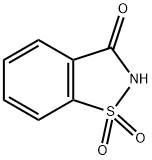

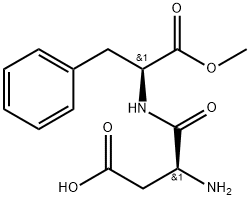
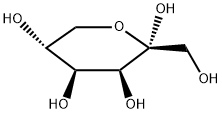
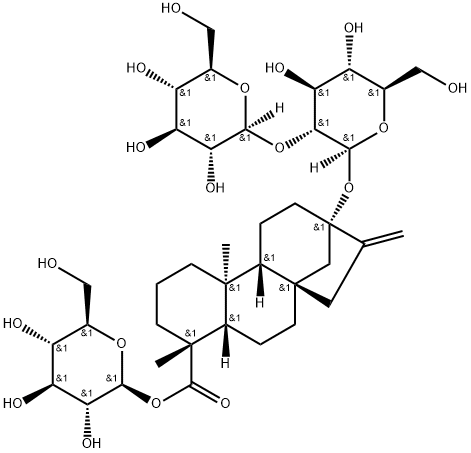
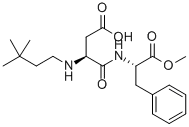
You may like
-
 Alitame 95% CAS 80863-62-3View Details
Alitame 95% CAS 80863-62-3View Details
80863-62-3 -
 17604-74-9 3-Pyridineacetonitrile, α-hydroxy- 98+View Details
17604-74-9 3-Pyridineacetonitrile, α-hydroxy- 98+View Details
17604-74-9 -
 131987-69-4 98+View Details
131987-69-4 98+View Details
131987-69-4 -
 Cyclohexane, (2-propynyloxy)- 67967-07-1 98+View Details
Cyclohexane, (2-propynyloxy)- 67967-07-1 98+View Details
67967-07-1 -
 764-60-3 2-Hexyn-1-ol 98+View Details
764-60-3 2-Hexyn-1-ol 98+View Details
764-60-3 -
 2-Propanamine, 1-chloro-, hydrochloride (9CI) 98+View Details
2-Propanamine, 1-chloro-, hydrochloride (9CI) 98+View Details
5968-21-8 -
 3-Iodophenylacetic acid 1878-69-9 98+View Details
3-Iodophenylacetic acid 1878-69-9 98+View Details
1878-69-9 -
 132945-75-6 (S)-1-Boc-3-methanesulfonyloxy-pyrrolidine 98+View Details
132945-75-6 (S)-1-Boc-3-methanesulfonyloxy-pyrrolidine 98+View Details
132945-75-6
